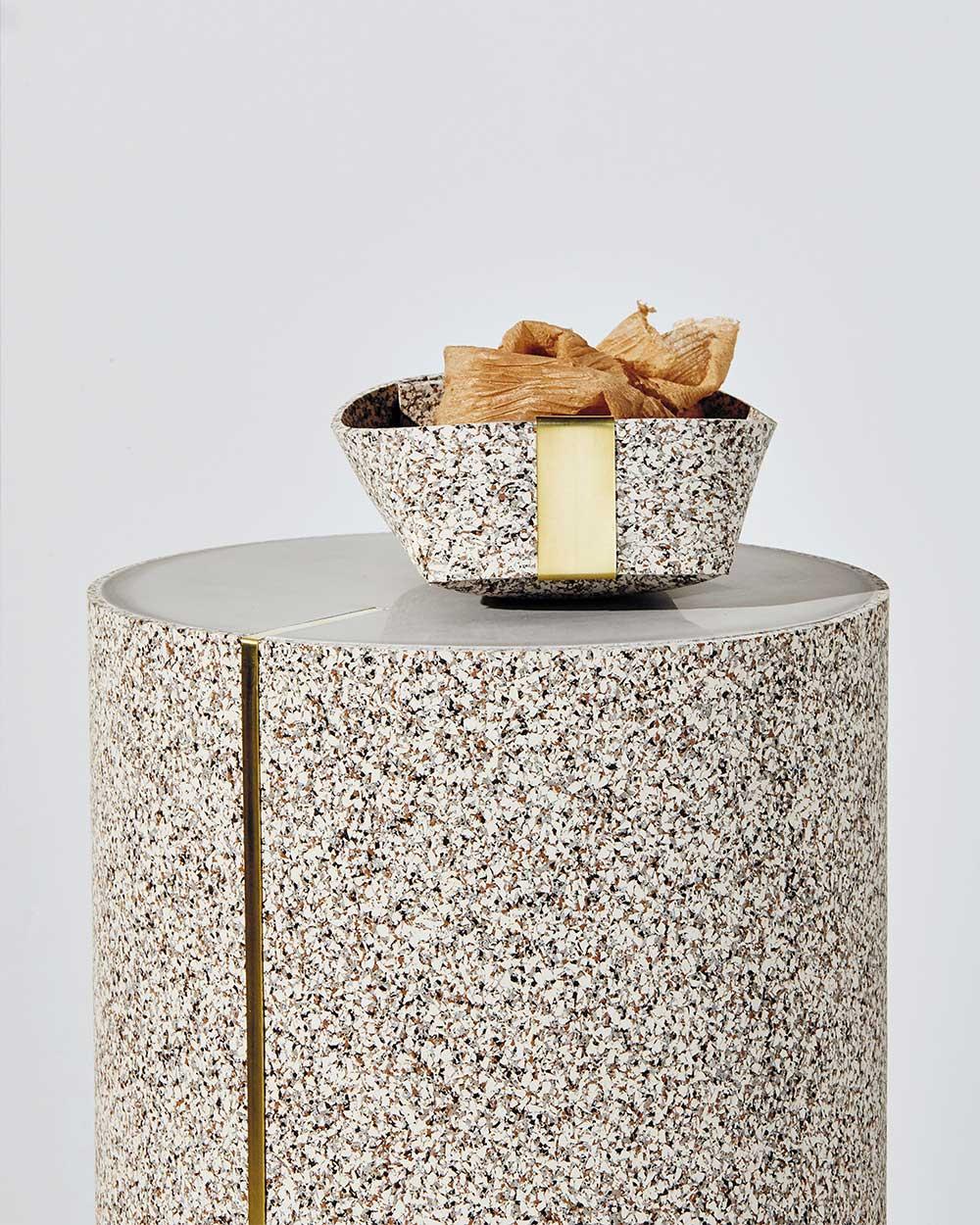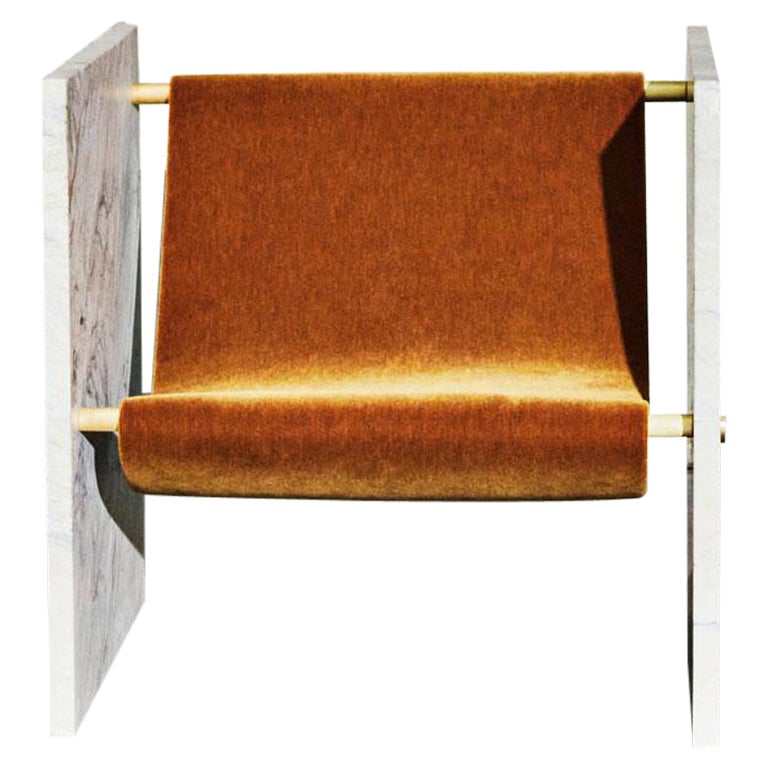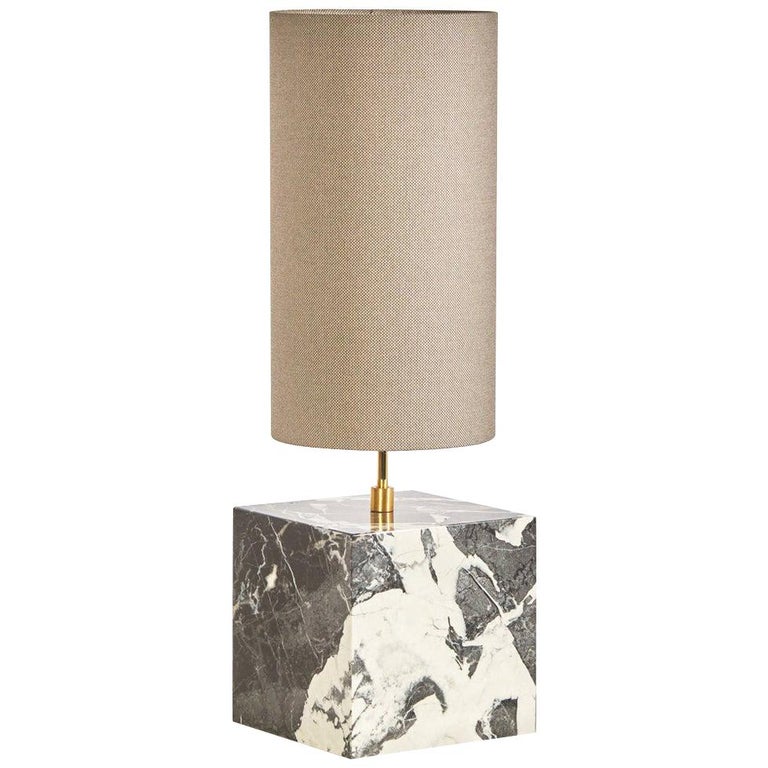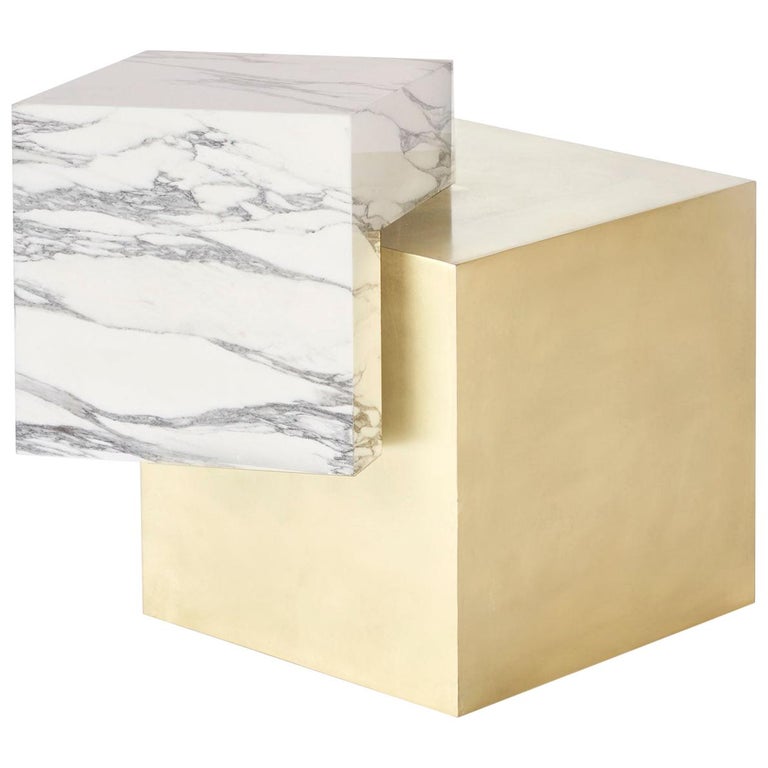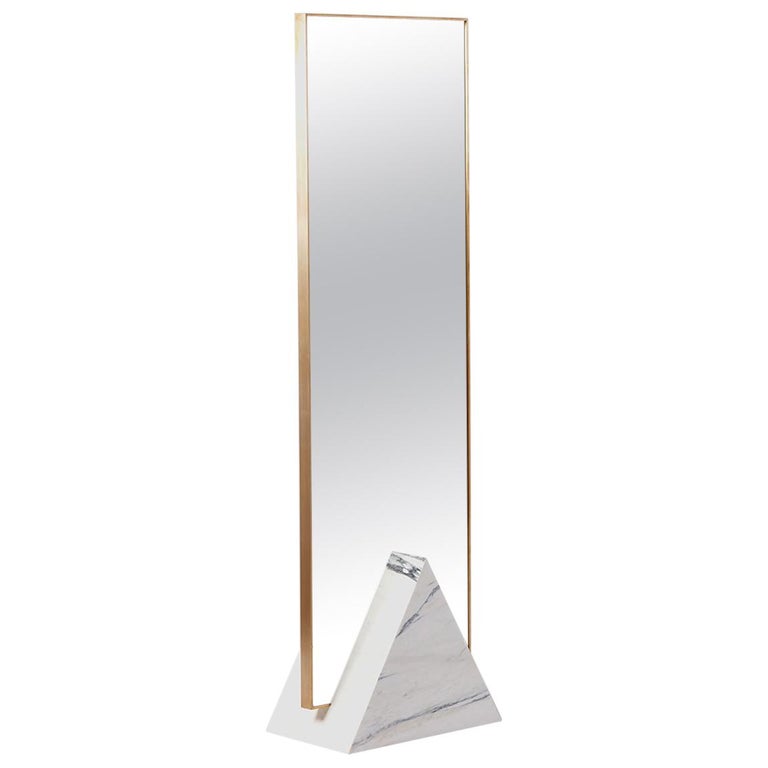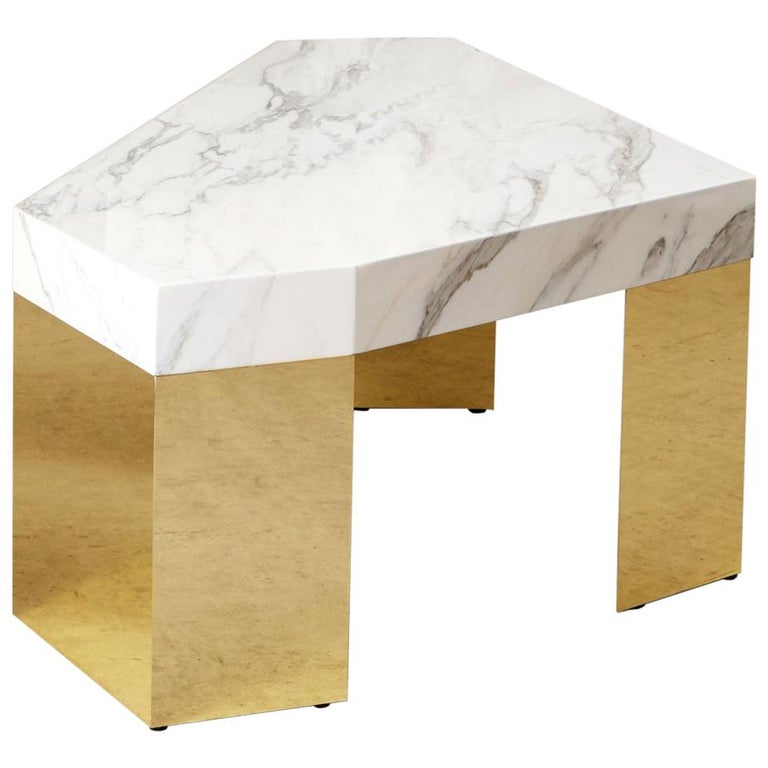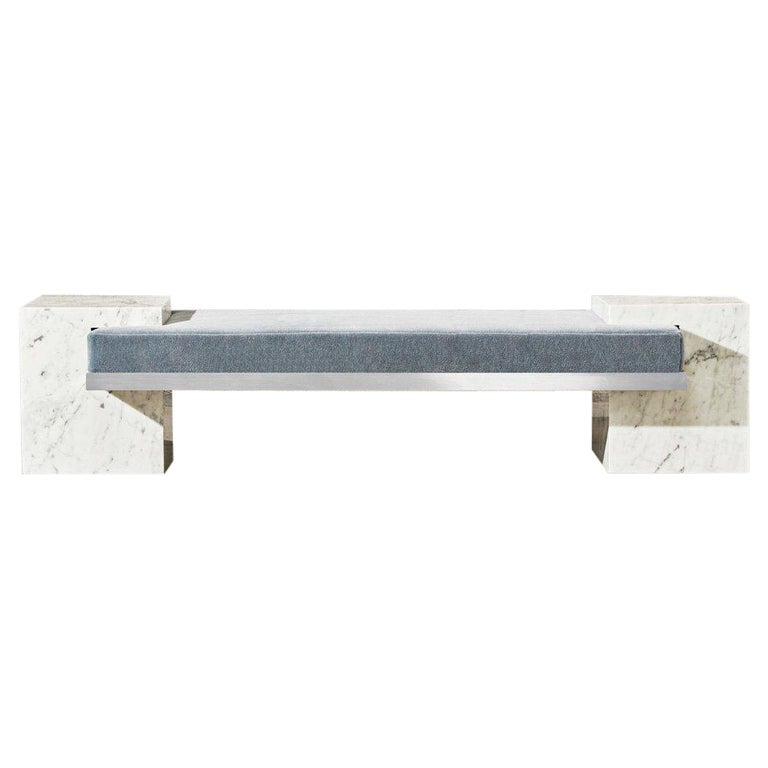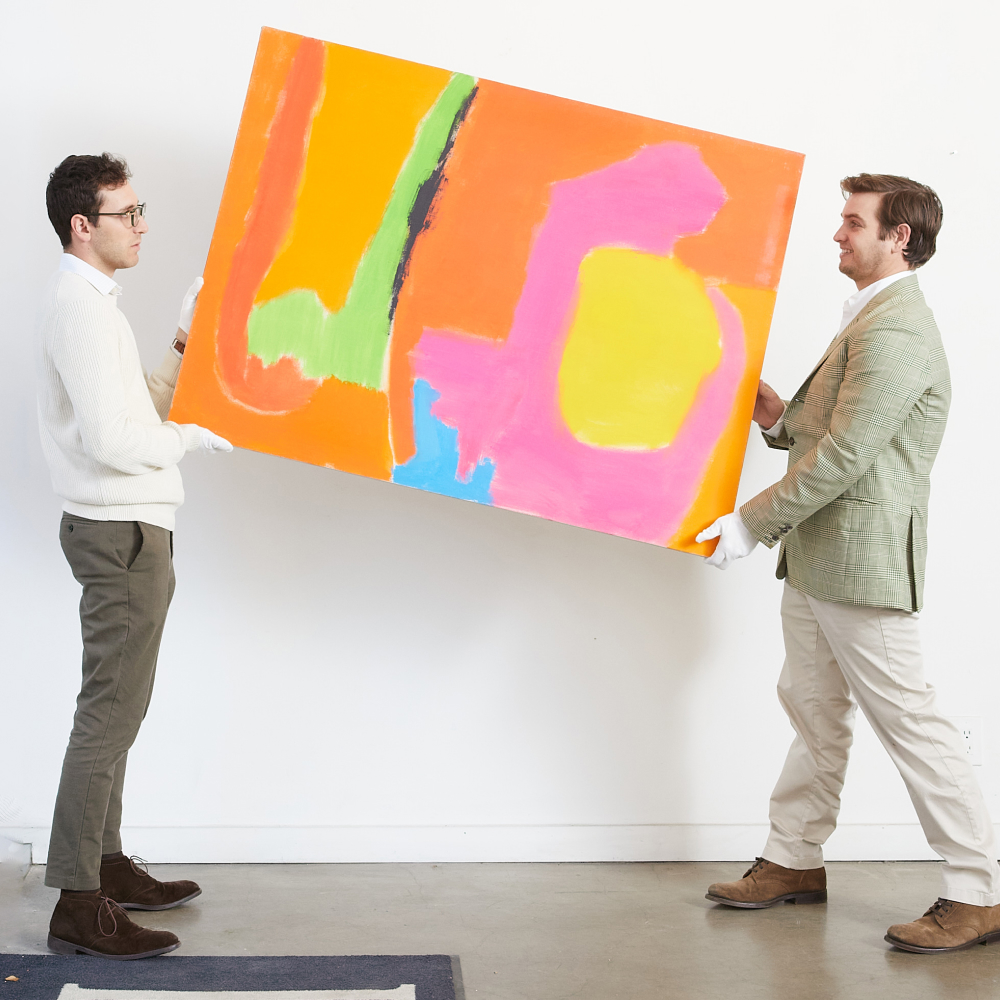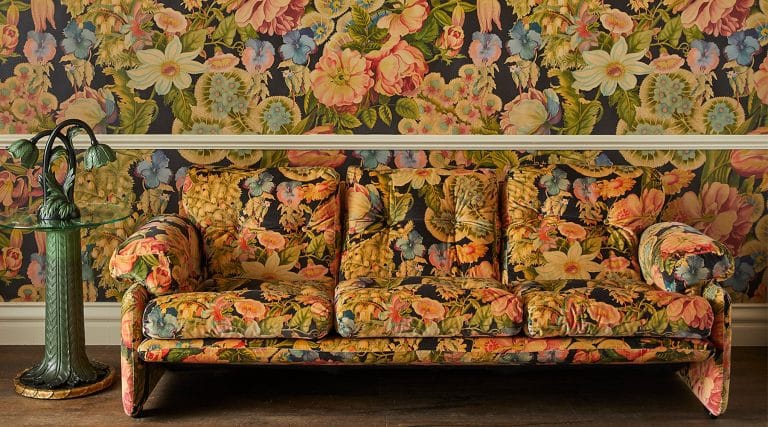March 20, 2022In 2015, a year after Arielle Assouline-Lichten had established her Brooklyn-based multidisciplinary design studio, Slash Projects, she was working with the architectural team tasked with designing interiors for a high-end residential building in New York City’s Soho neighborhood. The newly built structure’s Old New York aesthetic dictated “a lot of marble, steel and brass,” she recalls. “Part of my job was designing the gym, so I also had all these samples of recycled rubber flooring around.”

It was in that moment that Assouline-Lichten had her flash of inspiration for Slash Objects, a line of furniture and accessories that blends all these materials into compositionally unexpected architectonic forms. “I live in Greenpoint, Brooklyn, and there were a lot of marble yards with discarded stone just thrown into piles,” she recalls. “I’ve always been passionate about the environment and how our products impact the world. I thought it would be interesting to elevate recycled rubber by juxtaposing it with a super-luxury material like marble that had also been discarded.”
Today Slash Objects offers about 15 furniture pieces and a range of accessories. The 38-year-old’s journey to this point is fascinating, including stops at some of the world’s most renowned architecture firms, a head-to-head confrontation with the foundation that awards the prestigious Pritzker Prize and a nail-biting second-place finish on Ellen DeGeneres’s HBO Max series Ellen’s Next Great Designer.
Contrary to what some might assume, Assouline-Lichten’s hyphenated surname is not her married name. She was born to Joel Assouline, a French-Moroccan man distantly related to the famed publishing family, and Vibeke Lichten, a Danish-born architect who was raised primarily in Israel. The couple met in Switzerland and moved — apparently on a whim — to Philadelphia, where Joel imported gourmet delicacies to distribute to the city’s hotels and restaurants. (The family moved to New York in 2006.)
“Design was always prominent in the way my mother organized our lives,” says Assouline-Lichten. “She designed furniture and had [her pieces] around the house, and any time we traveled, we would visit the great architectural sites.”
Yet the stylish, dark-eyed Assouline-Lichten was more interested in fashion and technology (she designed the first website for her father’s business) and went to New York University to pursue, she says, “an intellectual degree” that combined philosophy and visual media. The focus of her eventual bachelor of arts in critical theory and visual media was “on how visuals have impacted society, especially in thousands of protests and conflicts with power,” she explains.
In retrospect, it foreshadowed a controversy ignited by Assouline-Lichten and her classmate Caroline Armory James, who together spearheaded the Women in Design student organization while Assouline-Lichten was completing her master’s of architecture degree at Harvard’s Graduate School of Design. In 2013, she and Armory James became incensed that the 1991 Pritzker Prize had gone solely to Robert Venturi. This completely negated the accomplishments of Venturi’s coprincipal, Denise Scott Brown. The petition they initiated requesting retroactive recognition for Scott Brown garnered more than 20,000 signatures.

The Pritzker organization, however, refused to budge, saying they awarded prizes only to individual architects, even though they had bestowed this honor on both Gordon Bunshaft and Oscar Niemeyer in 1988. “They’ve diversified their board and juries, and they’re more conscious of the laureates they choose,” notes Assouline-Lichten, “but their premise is that they don’t open historical records. We can’t accept that as an excuse for the way institutions skirt what is in their past.” (The single architect criteria has since been jettisoned.)
What turned Assouline-Lichten’s academic career in an architectural direction was a 2007 internship she had at the firm of Danish starchitect Bjarke Ingels after graduating from NYU. Her duties comprised mostly graphic design: putting together books for each project and creating the website for Bjarke Ingels Group’s 8 House in Copenhagen. But the design work in the physical world also piqued her interest. “I was intrigued,” she remembers. “I wanted to build things and create spaces. I wanted to play with the literal building blocks [of architecture and design].”
Assouline-Lichten could hardly have wished for better training. During her time at Harvard, she studied under Toyo Ito and took jobs with Kengo Kuma’s Japan and Paris offices and at Oslo-based Snøhetta. All this led to Slash Projects in 2014. “We were a nimble architectural design firm that also brought in my background in digital and graphic design,” she explains. “Our clients were start-ups and architects.”
But in 2015, as she worked on the Soho residential building and its gym, she realized she had a desire to branch out. “I wanted a project that would show what my designs could be,” she says. “I wanted to practice, to make things.”
This impulse became the genesis of Slash Objects, which debuted its first collection of furniture and accessories in the spring of 2016. Other than pairing high and low materials with an eye toward recycling and sustainability, “what’s super interesting to me is lightness and heaviness,” says Assouline-Lichten. “I play with a heavy material to make it feel light, or I experiment with obfuscating which material is surpassing or dominating the other.”
For example, the marble cubes she tips, tilts and insets in many of her pieces appear heavy and improbably — even precariously — balanced. Yet they are hollow, made from cut slabs of marble whose thinness makes them undesirable to other architects and designers. Assouline-Lichten’s very successful Adri chair is a sling made of recycled rubber or fabric suspended on brass dowels that connect to two monolithic square slabs of marble. While the marble exudes volume and weight, the sling is so lightly poised on the minimal brass elements that the overall perception of the chair is one of surprising buoyancy.
“A lot has to do with harmony between materials,” says Assouline-Lichten, “and proximity and tolerances of materials.” It is clear that the designer loves to push materials, the “literal building blocks” of her designs, to their almost illogical limit. That applies equally to a piece of furniture or a coaster.
This tension between volume and levity, she believes, connects us to a consciousness about our material world. When we question how one of her pieces is made, she says, “it brings us to some sort of awareness about the physical nature of materials, which helps us understand the importance of conserving and reusing them because they are precious.”

Assouline-Lichten’s furniture caught the eye of DeGeneres, who recruited the designer for the first season of her HBO Max competition show. Top honors for the season went to Mark Grattan, coprincipal of Mexico City–based furniture studio VIDIVIXI. But Assouline-Lichten says she appreciates how designing a furniture collection within the stressful strictures of the show pushed her in new ways.
Assouline-Lichten is currently experimenting with new materials and plans to debut more pieces this spring. Her focus, however, remains steadfast. “It’s about how we can bring value to the world through what we make and what we put out into it. I want to create pieces that are meaningful and needed.”



